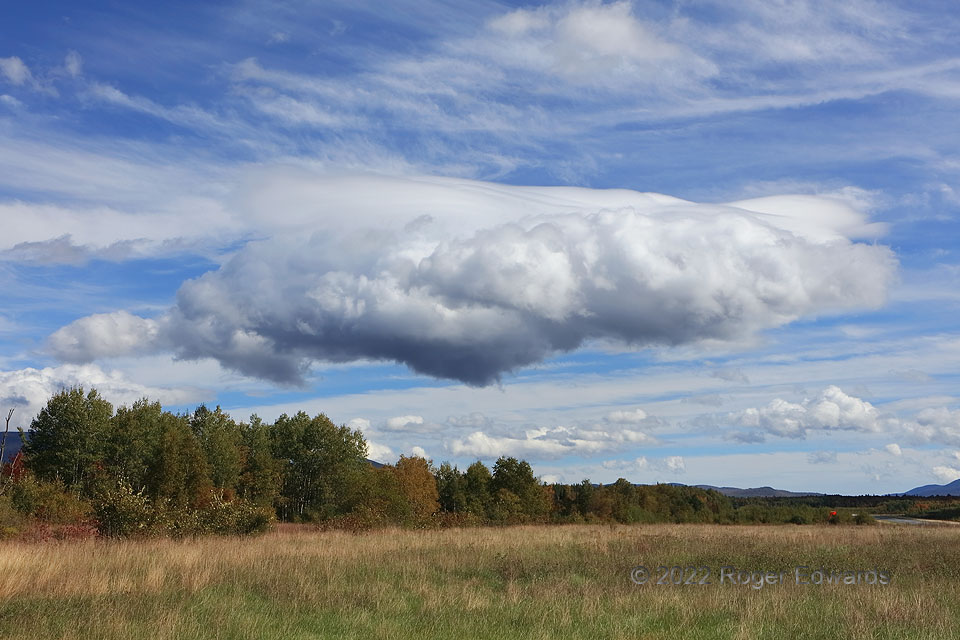Traditional observing rule and cloud charts tag mountain-wave lenticulars as “altocumulus standing lenticularis” (ACSL)—even if the lenticular cloud has no convective, cumuliform component at all. Literally speaking, the AC part, and especially C, is usually wrong. Most lenticular clouds are entirely laminar, not convective, and thus should be altostratus standing lenticularis (ASSL), an abbreviation you’ll never see in observations nor observing manuals. As you easily can see, however, this formation truly was convective and laminar! It stayed anchored in place for over half an hour, within and beneath a standing wave in the White Mountains, continually sporting a lenticular top and convective bottom. I’ve never seen anything quite like it, but it was easy to explain meteorologically. This cloud was a fascinating case of rising motion in the upward part of the midlevel standing wave being enough to bring some boundary-layer air below it to a level of (very shallow) free convection. Midlevel lapse rates—steepened near the cold core of a cyclone aloft—overlapped a moist and diabatically heated boundary layer with weak capping. The convection supplied moisture to the standing wave above, where temperatures were cold enough to make ice crystals for the lenticular formation, and never penetrated past it due to too much convective stability in the higher layer. Because this was near a local airport (see runway at right), any small plane taking off or approaching through this cloud would have had a strongly turbulent, dangerous experience. That’s why manually augmented weather observations often note lenticulars seen.
3 ESE Whitefield NH (27 Sep 22) Looking E
44.3682, -71.5559
